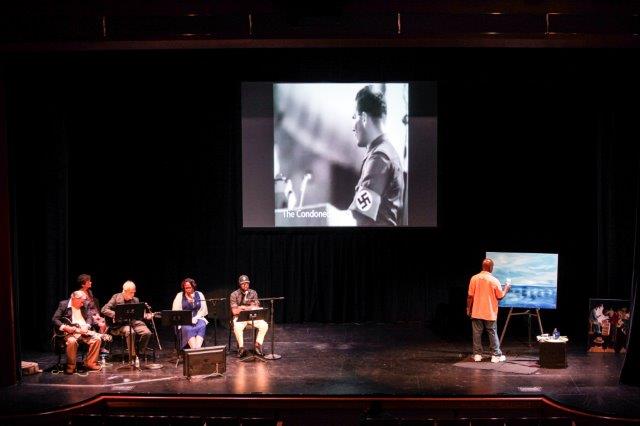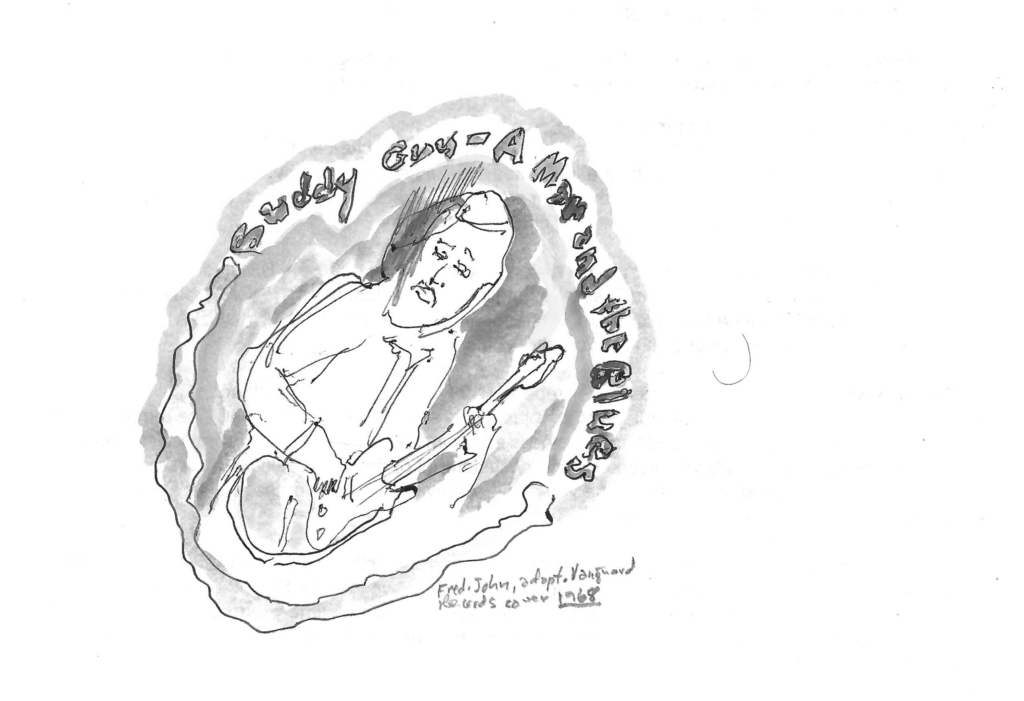Footage of joyful families playing at the beach is not usually associated with the Holocaust. Nor are evocative art and poetry thought of in tandem with the stark reality of prison. However, “Prison to Stage: Holocaust Images and the Poetry and Art of American Prisoners” at the Kennedy Center brought such images together, linking art expressing the beauty of life with the tragedy of imprisonment in a show that demonstrated the close proximity of good and evil.
“A poem can be the language of a heart set free,” R. Hall wrote in a poem while imprisoned at Arkansas State Prison. The search for physical and spiritual freedom from imprisonment played out in the language and artwork produced by prisoners in this 10th annual “Prison to Stage” production. The September 3 show was part of the Kennedy Center’s 15th Annual Page-to-Stage New Play Festival, which features readings and rehearsals of D.C. theater groups’ plays in production and is free to the public.
With pre-Holocaust footage in the background, Frederic John and Dennis Sobin played original jazz guitar while dramatists ShayREESE and Robert Harvey III performed readings of 41 inmates’ poetry. Sobin is a former phone-sex entrepreneur and mayoral candidate who, like the show’s other artists, has been incarcerated. His first original film alternated between family video footage of German Jews playing happily on vacation before the Holocaust and scenes of Nazi rallies and marches in sharp contrast. “From Prison to Stage” featured the work of over 70 incarcerated or formerly incarcerated artists.
One such artist, formerly incarcerated Larry Walker, created two complete paintings live on stage in front of the audience. His paintings, many featuring important Black historical figures, were available for sale after the performance.
“From Prison to Stage” was created by Safe Streets Arts Foundation, a nonprofit organization which provides incarcerated people with art materials and support to aid them in developing skills and confidence for a successful reentry into society.
The background film contrasted the harsh regimentation of incarceration with the beautiful self-expression of the poets and artists performing in front of it. The images of the “condemned” Jews and the “condoned” Nazis served as a backdrop to poems that included declarations of love, reflections on past wrongdoings, and musings on the existence of hatred in the world. The last segment of the film was titled “The Outcome,” and featured pictures of the results of the Holocaust, including images of dead bodies and starving children. The theater fell silent during a break in the musical accompaniment, reflecting the horror of that era.
Sobin said that he intended the images of mass imprisonment of Jews to suggest where the harsh punishments of America’s criminal justice system could lead. “It’s a warning to the people of today,” said John. In addition to evoking general evil, Sobin sought to communicate how individual acts of evil led many of the incarcerated artists to prison by combining scenes of Adolf Hitler’s rallies with gangster poetry. “Stained concrete, smoking gun/”Oh god what have I done?” laments one such poem written by Jack Branch in Florida State Prison. Sobin plans to use jailhouse images from classic films for next year’s show.
“We’re headed towards destruction,” wrote Albert Kuck of Arizona State prison. And yet, Prison to Stage suggested the possibility of a different path toward life and liberation instead of incarceration and punishment.






